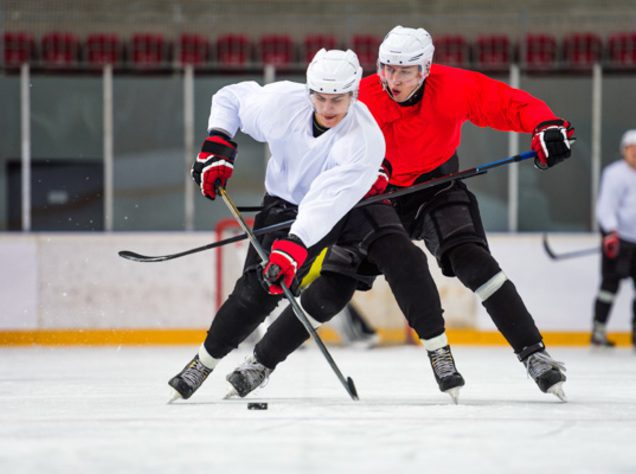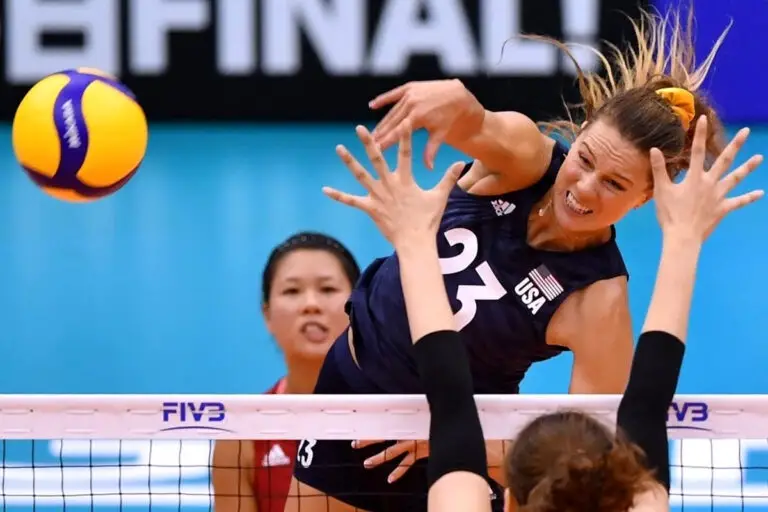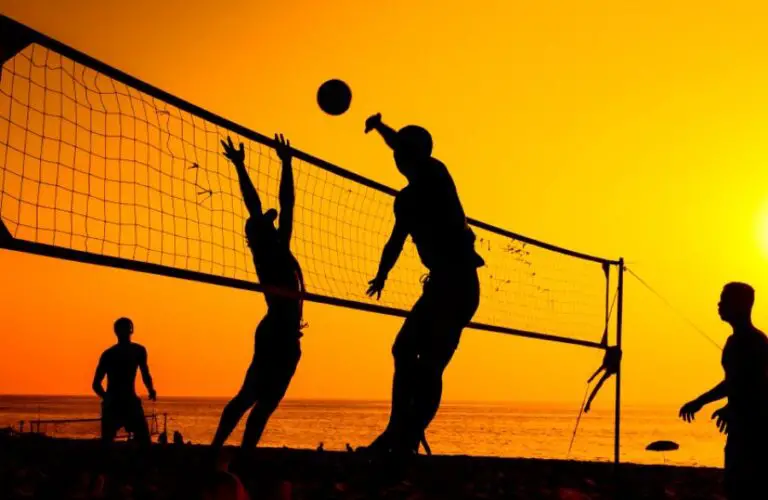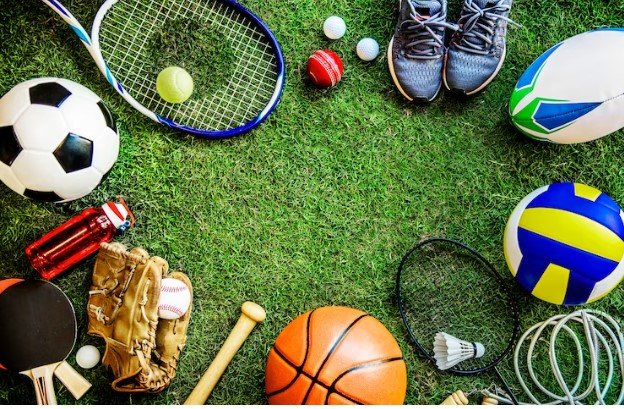What Equipment Do You Need for Volleyball: Essential Gear Guide
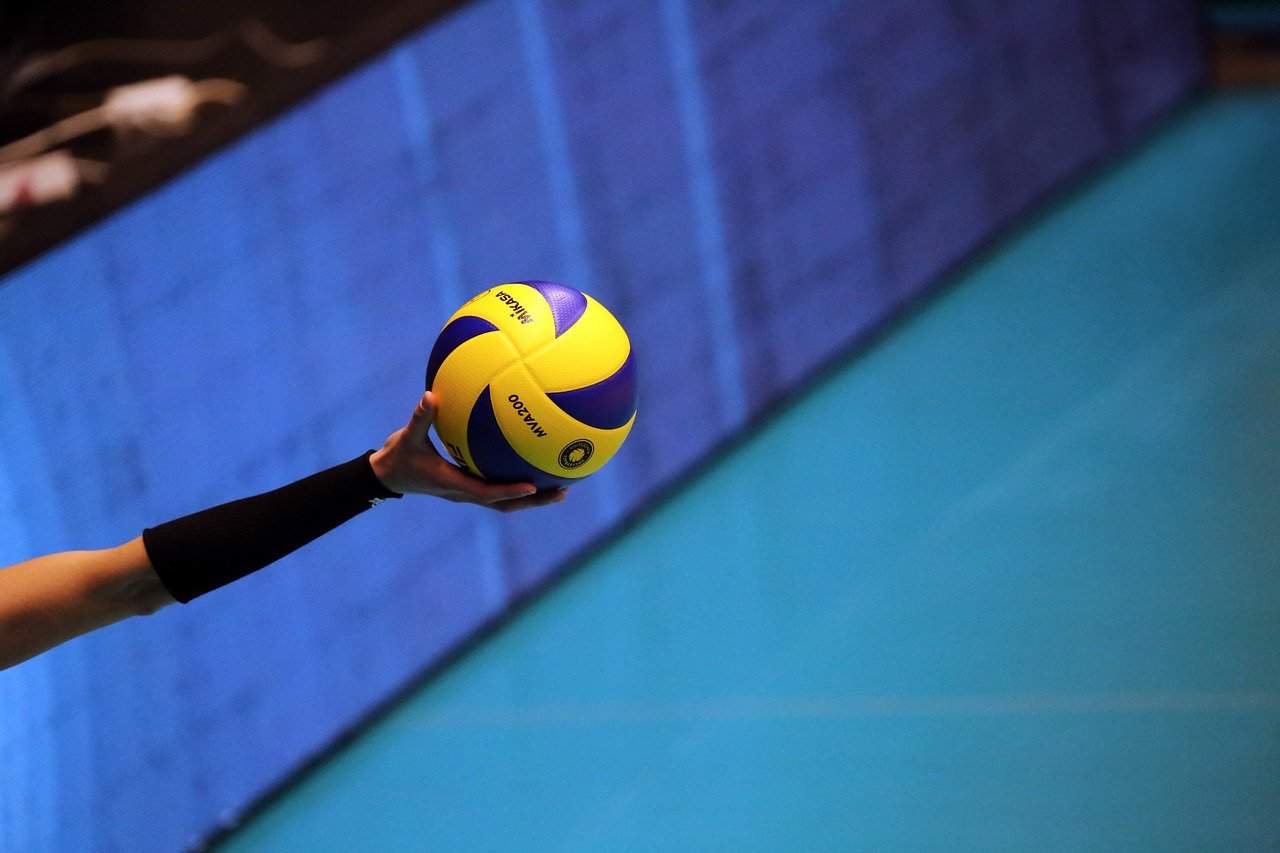
To play volleyball, you need a net, ball, knee pads, shoes, and comfortable clothing. Having the right equipment enhances performance and safety on the court.
Volleyball is a fast-paced and dynamic sport that requires specific gear to fully enjoy and excel in the game. Setting up a volleyball net in the sand or on a court, putting on knee pads to protect your joints during dives and jumps, and wearing appropriate shoes for grip and support are essential aspects of the game.
Choosing the right ball for your skill level and comfortable clothing that allows for unrestricted movement will help you focus on the game rather than discomfort. Being well-equipped prepares you for an enjoyable and competitive volleyball experience.
VOLLEYBALL EQUIPMENT BASICS
For anyone interested in playing volleyball, having the right equipment is essential. Whether you’re a beginner or a seasoned player, having the proper gear can enhance your performance and make the game more enjoyable. In this article, we will discuss the volleyball equipment basics that every player should have to get started. From the volleyball net to the personal gear, let’s dive in and explore what you need to succeed in this exciting sport.
VOLLEYBALL NET
A volleyball net is the centerpiece of any volleyball game. It divides the court into two halves and ensures fair play. When choosing a volleyball net, there are a few things to consider. Firstly, make sure the net is the right size for the level of play. An official volleyball net measures 32 feet long and 39 inches tall for men’s games, while it measures 29.5 feet long and 39 inches tall for women’s games. Secondly, check the material of the net. Opt for a net made of durable and weather-resistant materials like nylon or polyethylene. A high-quality net not only ensures longevity but also offers better visibility with contrasting colors.
VOLLEYBALL
A volleyball is another essential piece of equipment you need for the game. It is crucial to choose a ball that meets the correct specifications outlined by the governing bodies of volleyball. An official volleyball ball should be made of high-quality synthetic leather or composite leather. It should have a circumference of 25.6 to 26.4 inches and weigh between 9.2 to 9.9 ounces. Additionally, make sure the ball is properly inflated according to the recommended pressure, which is typically around 4.3 psi. A well-inflated ball ensures better control and accuracy during play.
PROTECTIVE GEAR
While volleyball is generally a low-contact sport, some players might still benefit from protective gear. Knee pads are perhaps the most common type of protective gear used in volleyball. They provide cushioning and support to the knees, reducing the risk of injuries when diving or sliding on the court. When choosing knee pads, opt for ones made of comfortable and breathable materials while providing ample padding. Another optional piece of protective gear is ankle braces, which can help prevent ankle sprains and offer additional stability during lateral movements.
FOOTWEAR
The right footwear is vital for any sports activity, and volleyball is no exception. When it comes to volleyball, shoes that provide excellent grip and stability are crucial. Look for volleyball-specific shoes that have gum rubber or non-marking soles designed for indoor courts. They should also offer proper cushioning, arch support, and ankle stability. Good volleyball shoes should be snug yet comfortable, allowing quick movements without compromising safety.
APPAREL
Lastly, don’t forget about the right apparel for volleyball. Wear lightweight and breathable clothing that allows for a full range of motion. Opt for moisture-wicking materials that keep you dry and comfortable during intense gameplay. Additionally, consider wearing a jersey or a team shirt that clearly distinguishes you from the opposing team. This helps maintain clarity and prevents confusion during the game.
By having the essential equipment discussed above, you’ll be well-prepared to enjoy and excel in the game of volleyball. Remember, investing in quality gear not only enhances your performance but also ensures your safety on the court. So, gear up and have a fantastic time playing this thrilling sport!
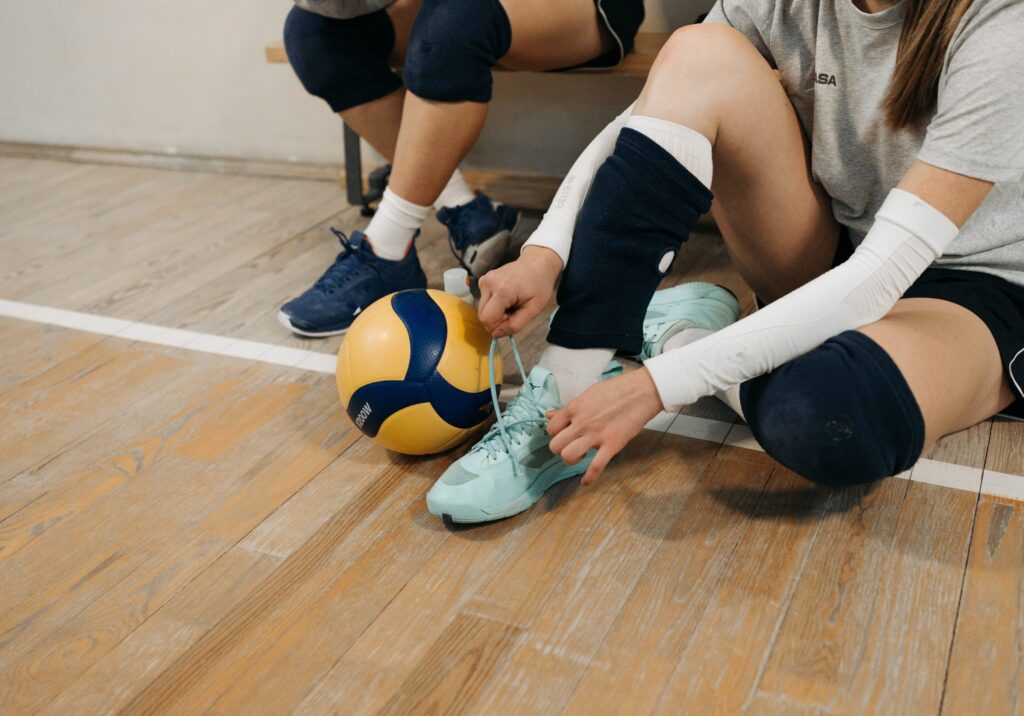
ESSENTIAL INDIVIDUAL EQUIPMENT
VOLLEYBALL SHOES
Volleyball shoes are crucial for providing stability and support during agile movements on the court.
KNEE PADS
Protective knee pads are important to prevent injuries while diving or making plays on hard surfaces.
ANKLE BRACES
Wearing ankle braces can help prevent twists or sprains during quick directional changes or jumps.
TEAM EQUIPMENT
Team Equipment for volleyball is crucial to ensure smooth gameplay and player safety. Each player on the team should have the necessary gear to perform their best on the court. Proper uniforms and quality volleyballs are essential for a successful match.
UNIFORMS
Uniforms play a big role in a volleyball team’s identity and functionality. They should be comfortable, breathable, and durable to withstand the rigors of the game.
VOLLEYBALL
The volleyball itself is the most important piece of equipment in the game. It should be of regulation size and weight to meet official standards and ensure fair play.
EQUIPMENT FOR TRAINING
When it comes to training for volleyball, having the right equipment is crucial. These tools can help you improve your skills, strengthen your muscles, and enhance your overall performance on the court. In this section, we will discuss three essential pieces of equipment that are commonly used for training in volleyball: cones, resistance bands, and practice balls.
CONES
Cones are a versatile tool that can be used in a variety of training exercises. They are commonly used to mark boundaries or create specific drills on the court. One of the key benefits of using cones is their ability to improve agility and footwork. By setting up a series of cones in different patterns, players can work on their speed, quickness, and change of direction. These exercises are particularly useful for positions that require frequent movements and quick reactions, such as setters and defenders.
Here are some ways you can incorporate cones into your volleyball training routine:
- Set up a cone drill where you have to shuffle quickly between cones, mimicking lateral movements on the court.
- Use cones to mark specific zones on the court and practice hitting or serving within those boundaries.
- Create a cone ladder to work on explosive jumps and quick sprints.
RESISTANCE BANDS
Resistance bands are a valuable tool for volleyball players looking to build strength and improve muscle activation. These bands provide resistance throughout the full range of motion, making them ideal for targeting specific muscle groups used in volleyball movements. By incorporating resistance bands into your training routine, you can enhance your power, speed, and control on the court.
Here are some exercises that can be done using resistance bands:
- Attach a band to your ankles and perform lateral walks to strengthen your hip muscles, which are essential for stability and lateral movements.
- Use a band for shoulder external rotation exercises to target the rotator cuff muscles, which are crucial for overhead movements like spiking and serving.
- Wrap a band around your waist and attach it to a sturdy object to add resistance to your jumping and landing drills, helping to improve leg power and stability.
PRACTICE BALLS
No volleyball training session is complete without practice balls. These are specifically designed to replicate the weight and feel of a regulation volleyball, making them perfect for skill development and improving technique.
Using practice balls allows players to:
- Practice their passing and setting techniques without the added pressure of a live game.
- Work on their ball control and accuracy by performing repetitive drills.
- Develop better arm swing mechanics for serving and attacking.
Having a good supply of practice balls is essential for both individual and team training sessions. Make sure to choose high-quality practice balls that are the correct size and weight for your skill level.
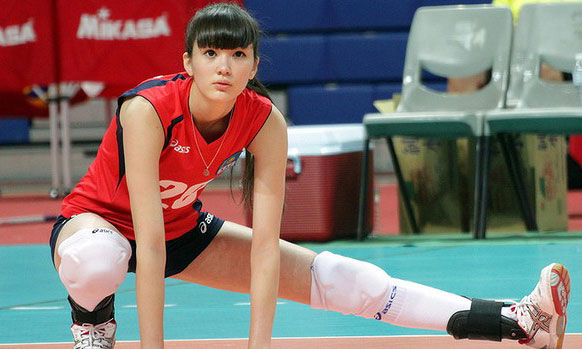
OPTIONAL EQUIPMENT FOR ADVANCED PLAYERS
VOLLEYBALL GLOVES
Volleyball gloves are designed to provide players with enhanced grip and stability when handling the ball. They are especially beneficial for advanced players who require greater control and precision in their movements. These gloves feature padded palms and fingers, offering protection and support during intense gameplay.
ELBOW PADS
Elbow pads are essential for advanced players as they safeguard against impact and minimize the risk of injury during dives, blocks, and digs. With reinforced padding, these pads provide extra defense for the elbows, allowing players to maneuver with confidence and agility.
EQUIPMENT FOR PLAYING ON DIFFERENT SURFACES
When it comes to playing volleyball, having the right equipment for different playing surfaces is crucial to ensure optimal performance and safety. Whether you’re playing indoors or outdoors, having the appropriate gear can make a significant difference in your game. Let’s explore the essential equipment needed for playing volleyball on different surfaces.
INDOOR SHOES
When playing volleyball indoors, it’s important to wear indoor-specific volleyball shoes. These shoes are designed with non-marking soles that provide excellent traction on polished gym floors. The cushioning and support in indoor volleyball shoes also help minimize the impact on your joints during quick movements and jumps. It’s essential to choose a pair that offers stability and comfort to enhance your performance on indoor courts.
OUTDOOR SHOES
For outdoor volleyball courts, outdoor volleyball shoes are an essential piece of equipment. These shoes feature durable, all-weather soles that provide excellent grip on various outdoor surfaces. Additionally, outdoor volleyball shoes often have enhanced ventilation and sturdier construction to withstand rougher outdoor playing conditions. The right pair of outdoor volleyball shoes will provide the necessary stability and support needed for playing on outdoor courts, ensuring you can move confidently and effectively on different surfaces.
ESSENTIAL SAFETY EQUIPMENT
When it comes to playing volleyball, safety should be a top priority. That’s why it’s essential to have the right equipment to protect yourself and prevent injuries. In this section, we will discuss two key pieces of safety equipment that every volleyball player should have: a First Aid Kit and water bottles.
FIRST AID KIT
Having a First Aid Kit on hand is crucial in case of any minor injuries that may occur during a volleyball game. This kit should contain the necessary supplies to clean and dress wounds, such as adhesive bandages, antiseptic wipes, and gauze pads. It’s also wise to include additional items like instant cold packs for reducing swelling and disposable gloves for hygiene purposes. Keeping a well-stocked First Aid Kit with you not only ensures immediate treatment but also shows that you prioritize the safety and well-being of yourself and your teammates. Remember, accidents can happen, so being prepared is key.
WATER BOTTLES
Staying properly hydrated is crucial when engaging in physical activities like volleyball. Losing fluids through sweat can lead to dehydration, resulting in reduced performance and potential health risks. That’s why it’s important to always have water bottles readily available during practices, games, and even breaks. Hydration should be a conscious effort, so it’s recommended to have water bottles that are easy to use and hold enough water to last through the entire duration. Consider investing in reusable, BPA-free bottles that are easy to carry and have a convenient flip-open cap. By providing water bottles for yourself and your teammates, you can help ensure adequate hydration and maintain optimal performance on the court.
MAINTENANCE AND CARE OF VOLLEYBALL EQUIPMENT
Volleyball equipment, just like any sports gear, requires proper maintenance and care to ensure longevity and optimal performance. By following simple cleaning and storage practices, you can preserve your volleyball equipment for a long time.
CLEANING
- Wipe your volleyball regularly with a damp cloth.
- Use mild soap and water for thorough cleaning.
- Avoid harsh chemicals or abrasive cleaners.
STORAGE
- Store volleyball in a cool, dry place away from direct sunlight.
- Avoid storing equipment in damp or humid areas.
- Keep balls inflated to the recommended pressure to maintain shape.
FREQUENTLY ASKED QUESTIONS FOR (WHAT EQUIPMENT DO YOU NEED FOR VOLLEYBALL)
WHAT BASIC EQUIPMENT IS NEEDED FOR VOLLEYBALL?
To play volleyball, you’ll need a ball, net, court, and comfortable athletic attire.
HOW TO CHOOSE THE RIGHT VOLLEYBALL SHOES?
Look for lightweight, supportive volleyball shoes with good traction and cushioning for quick movements.
WHAT TYPE OF CLOTHING IS BEST FOR VOLLEYBALL?
Choose breathable, flexible athletic wear that allows for ease of movement and comfort on the court.
WHY IS IT IMPORTANT TO HAVE QUALITY KNEE PADS FOR VOLLEYBALL?
Knee pads protect against impact during dives and fall, reducing the risk of injury.
CONCLUSION
To excel at volleyball, having the right equipment is crucial. From the basics like a ball and net to protective gear like knee pads, the right equipment can enhance your performance and keep you safe. It’s important to invest in high-quality and durable equipment that suits your needs and fits properly to ensure optimal performance.
So, gear up with the right equipment and let your game soar!


